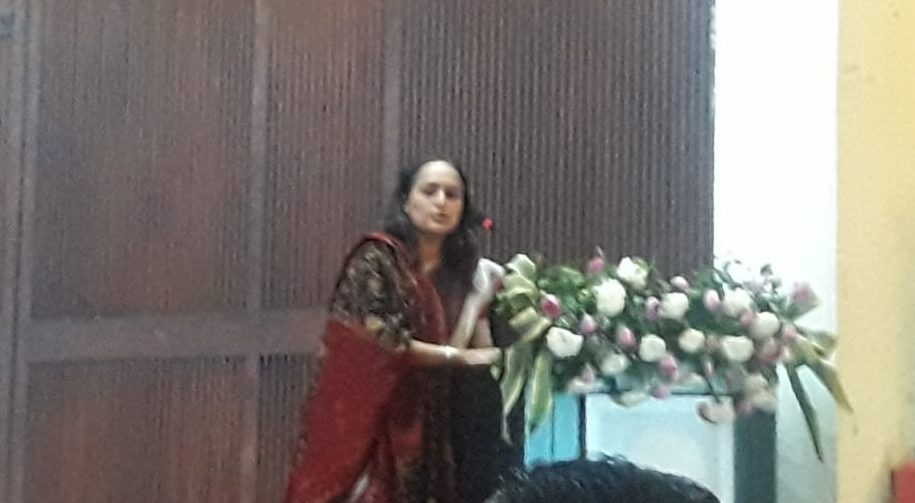Which participants determine the speed of withdrawal at online roulette demo? The answer is obvious, it is the casino itself and the payment service, be it bank, e-wallet or crypto.
State level Consultation to develop Road map to ensure Safe Migration of Unorganised workers
There is a need to study the pattern of migration of labour and lack of database about the informal economy is a hindrance in developing safe migration of unorganised workers, said experts at a state level seminar organised at Mahatma Gandhi Labour Institute.
Rising inequalities in job and income opportunities between urban and rural India have led to an unprecedented movement of labour force across the length and breadth of India. In the last few decades, the informal sector emerged as a largest employment generator. 93 percent of India’s work force is employed in the informal economy, devoid of any social or legal protection. Migrant workers from a distinct category within this, 423 million unorganized workforce; facing a great deal of vulnerability. Gujarat state is a prosperous state in India, with 4.99% of the national population, and 7.6% of the national income. Its per capita income at current prices is Rs. 89668 compared to Rs. 61564 of India (2012-2013), i.e. 146% higher than the national average. With rapid growth of industries (10.3% annual growth rate) and large inflows of investments, the state has done very well in the last two decades.
Internal migration within the state or inflows of migration from outside the state is not a new development in Gujarat. However, one observes a significant jump in the migration in the recent decades. A number of studies have suggested that Gujarat is now one of the important magnets that attract migrants from large number of other states, like Rajasthan and Madhya Pradesh, Maharashtra, Chhattisgarh, Uttar Pradesh, Jharkhand, Bihar etc where economic opportunities are rather limited*. Also there has been a significant increase in intra-state migration from less to more developed regions, which may have been further facilitated by increased connectivity and infrastructure within the state. In 2007-08, Gujarat was among the 5 states having the highest incidence of net migration next to Maharashtra, Haryana, Chhattisgarh and Uttara Khand.
In order to develop a road map to ensure Safe Migration of Unorganised workers with a special focus on welfare of Women and Children in Gujarat, the MGLI in partnership with UNICEF organized a two-day Seminar on “State Level Seminar to Develop Road Map to Ensure Safe Migration of Unorganised Workers: With a Special Focus on Welfare of Women and Children in Gujarat”. Caritas India was invited by MGLI and UNICEF as resource person to share experiences in our intervention to combat human trafficking. The topic of discussion was “Unsafe migration leading to trafficking in Children and Women”.
Ms. Leeza participated in the Seminar and shared Swaraksha, an Anti Human Trafficking Program in Uttar Pradesh. The Swaraksha works at the grassroots to create awareness among the community, local governance and education institutes to empower them to prevent human trafficking.
With the experience from the field she shared some recommendations to unsafe migration leading to human trafficking. The recommendations are -Promote and strengthen local governance (Panchayat), Sensitisation and training of law enforcement agencies, keeping children on the path of development- reducing their vulnerability, improving their resilience, empowering them legally, politically and economically, Engage with multistakeholders and develop MoU between states to promote safe migration.
Experts at the seminar also called upon the need to integrate migrants in state-run schemes. Deepa Sonpal, programme officer of Unnati while elaborating on what needs to be done for migrant workers said that state portability of schemes like Ayushman Bharat and NFSA can go a long way in addressing some of the concerns. A survey by the organisation had also found that a poor household needed just Rs 75,000 per year to survive and if every scheme of the poor is to reach then it can provide them with as much as Rs2 lakh per annum.
Vipul Pandya of Bandhkam Mazdoor Sangathan said that it has been observed that the higher the level of education in a place the lower is the migration.
He also reiterated that despite several schemes for the welfare of migrant labourers, adivasi labourers who form bulk of the labour force continue to be deprived of the same. “Six lakh labourers are registered for social security of which hardly 1 lakh are tribal labourers despite the fact that they form the bulk of the labour force,” said Pandya.
Other Sub themes discussed during Seminar was – Patterns and Trends of unsafe migration in children and their families in Gujarat- sharing of empirical data and making meaning out of them; Unsafe migration in tribal and other marginalized communities of Gujarat- who/ what/ where/ how- and strategies to address it; Child Protection issues in Organized and Unorganised sectors- involvement of children and adolescents in various hazardous occupations and processes- what/ who and how and strategy to address it; Preventive interventions to address unsafe migration in children, adolescents and women- sharing of good practices; Rescue and rehabilitation of victims of exploitative labour and trafficking- key challenges and opportunities, Legal framework and various government initiatives to address social security and unsafe migration in children and women- key scope, challenges and way forward.
Copyright Caritas India 2013 ! Developed by Neural Info Solutions Pvt. Ltd.















































